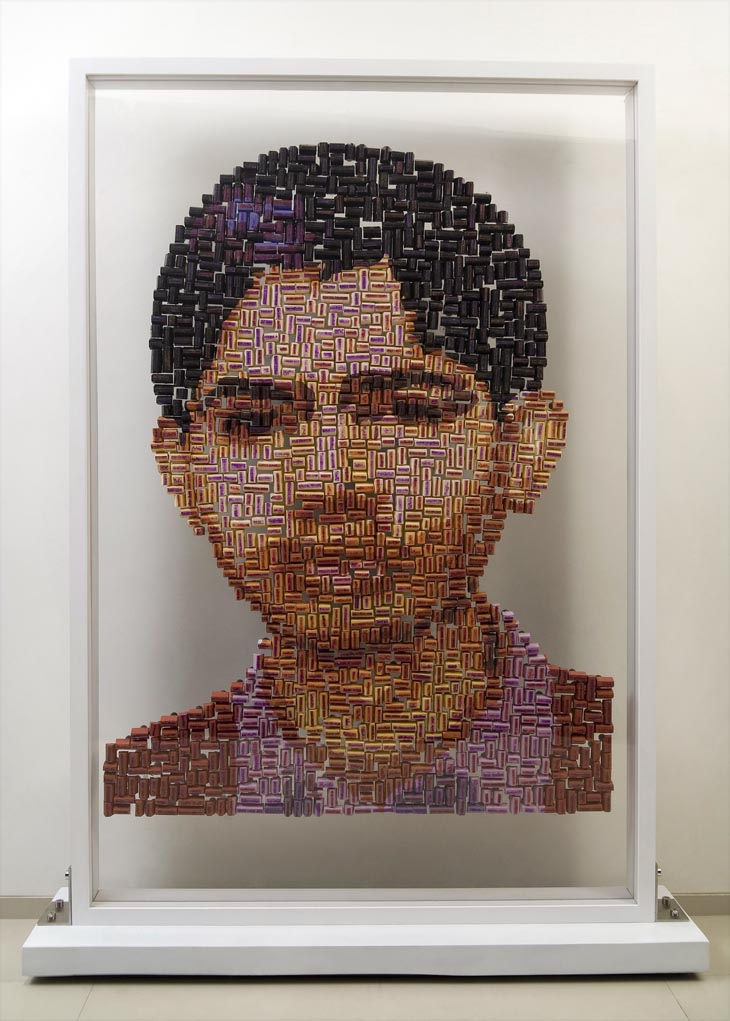
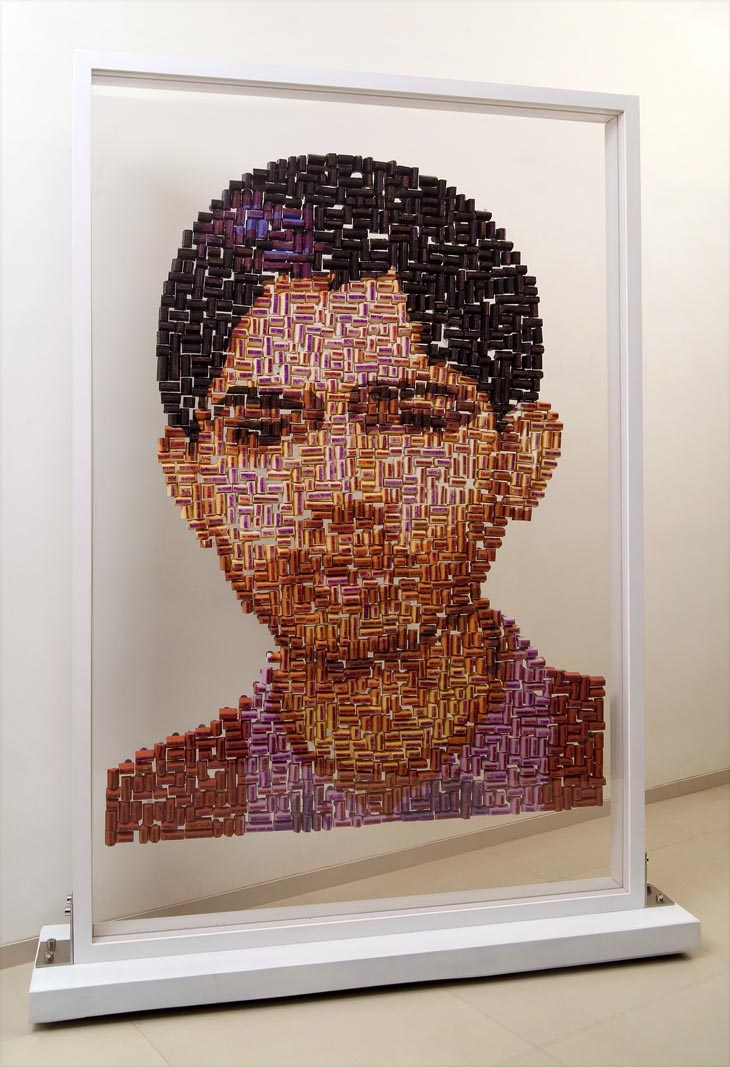
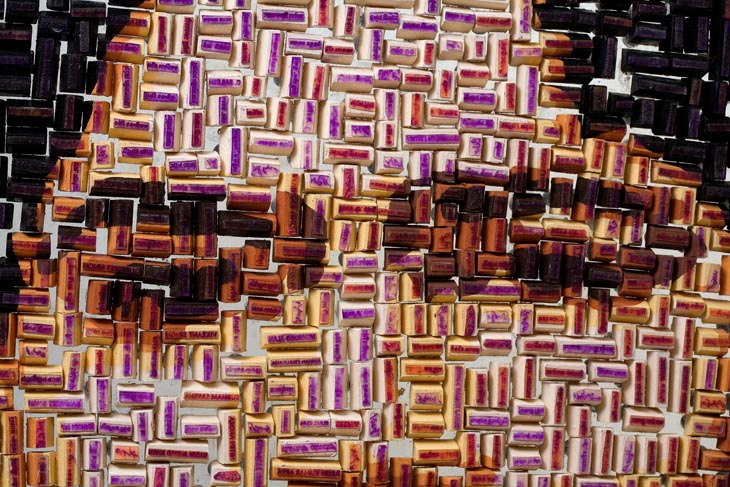
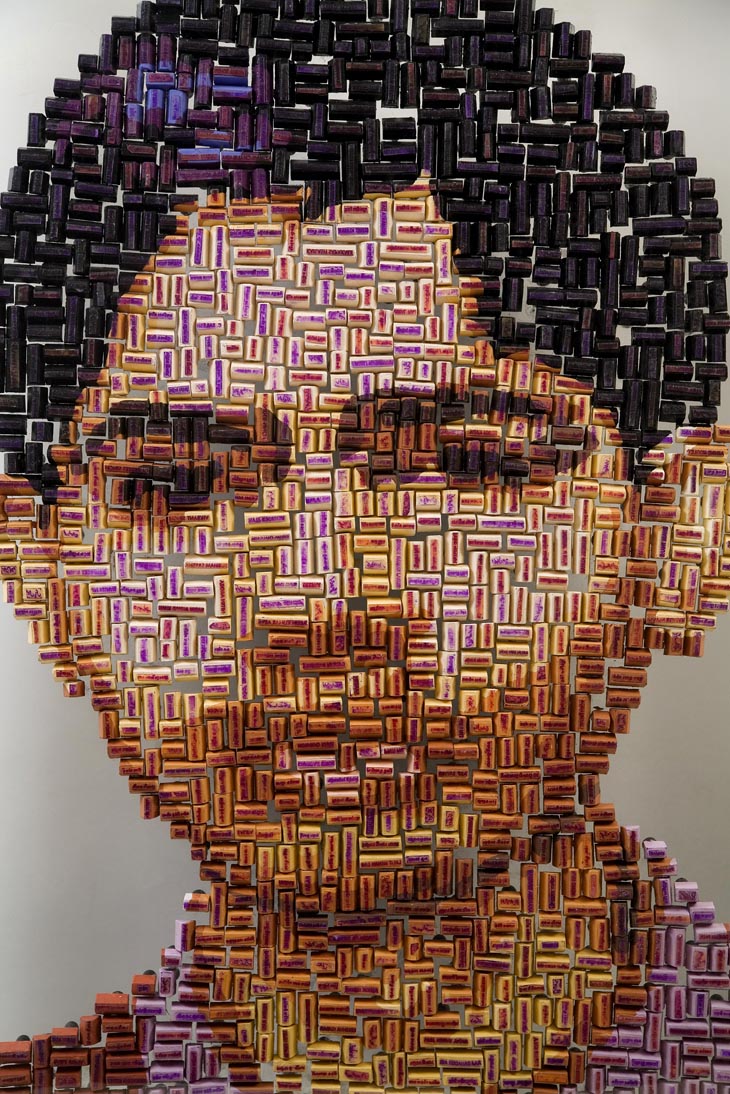
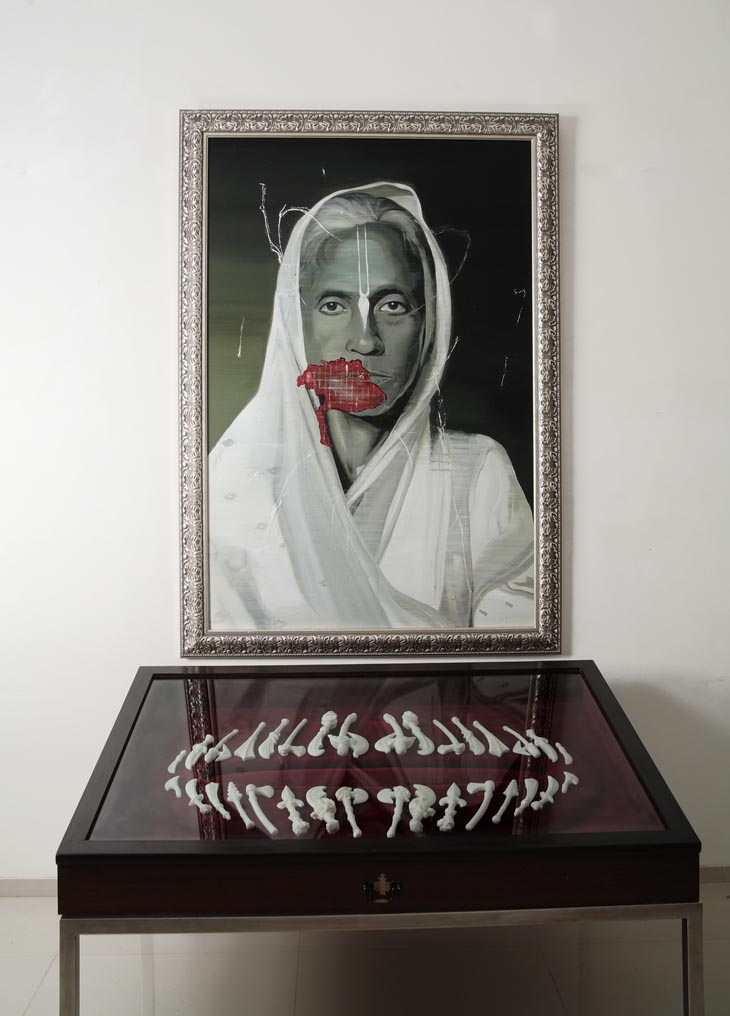
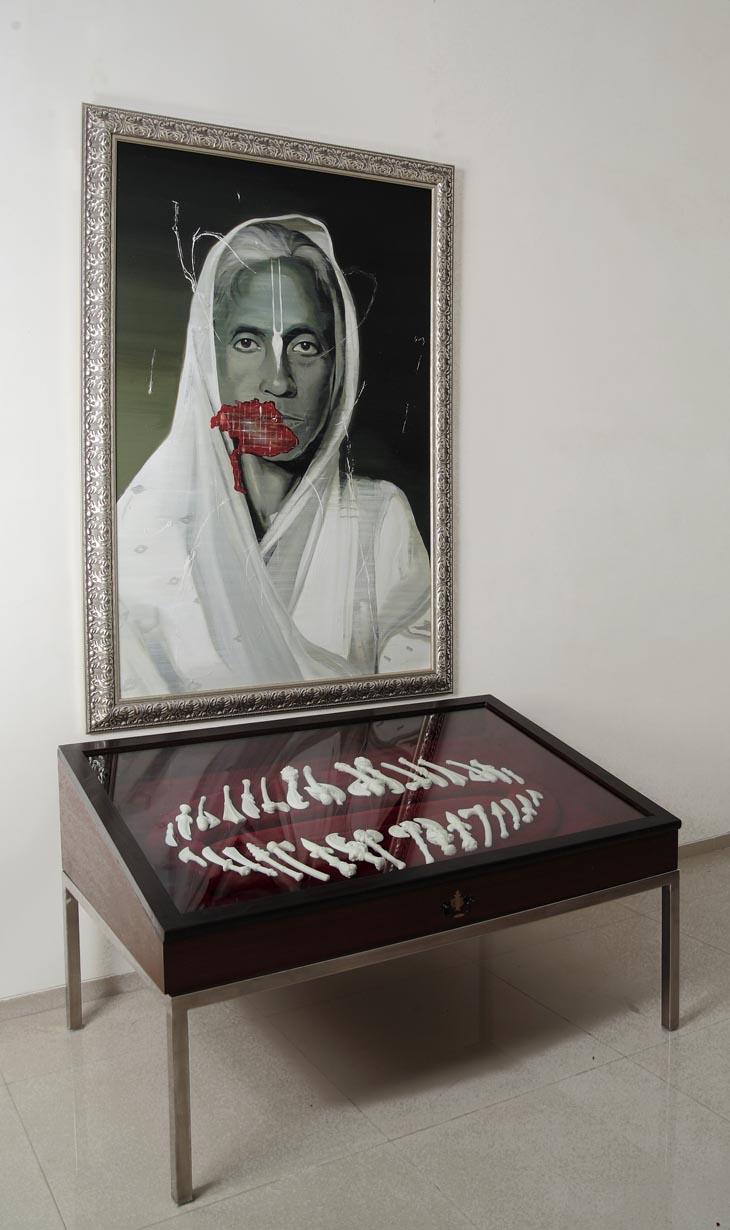
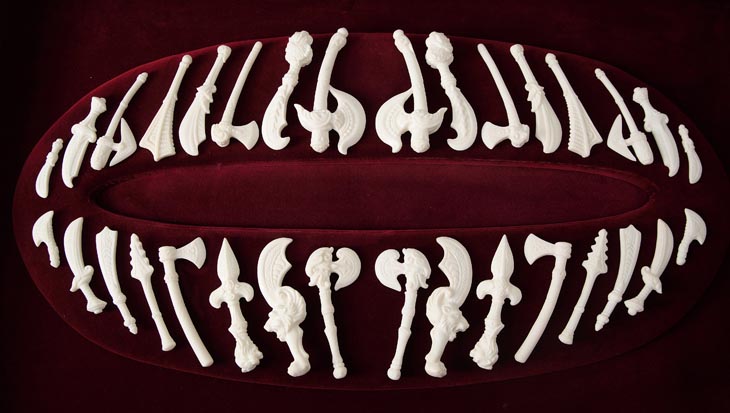
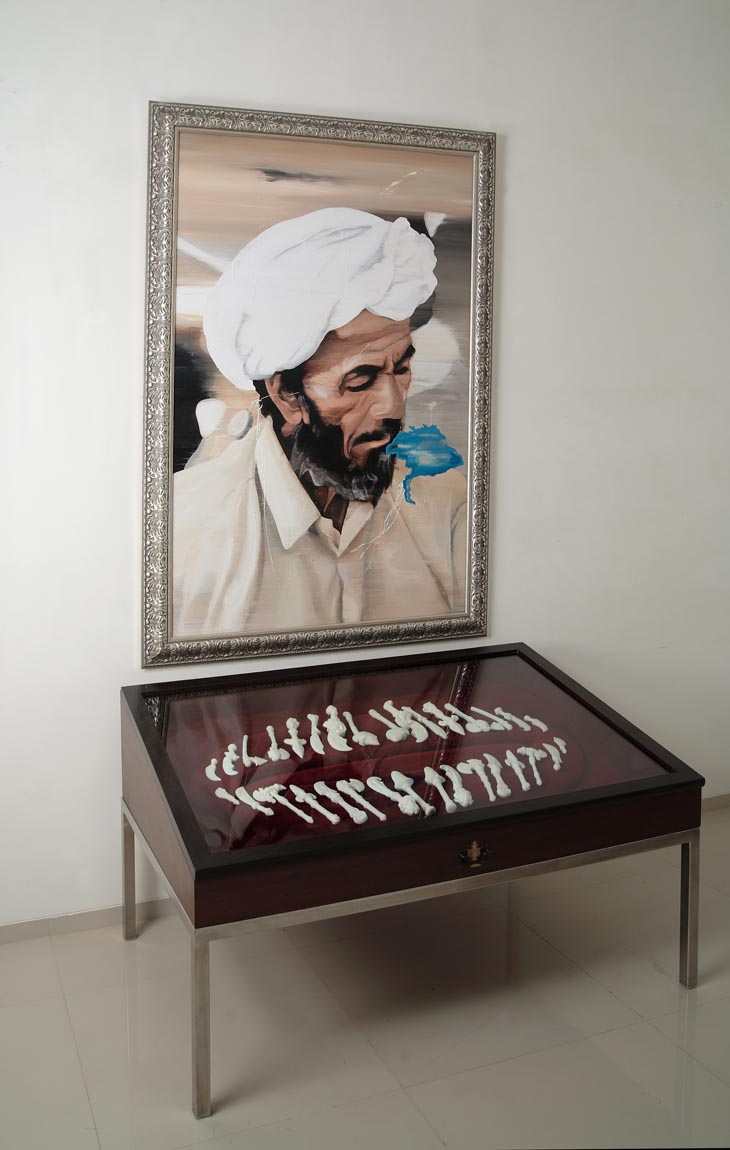
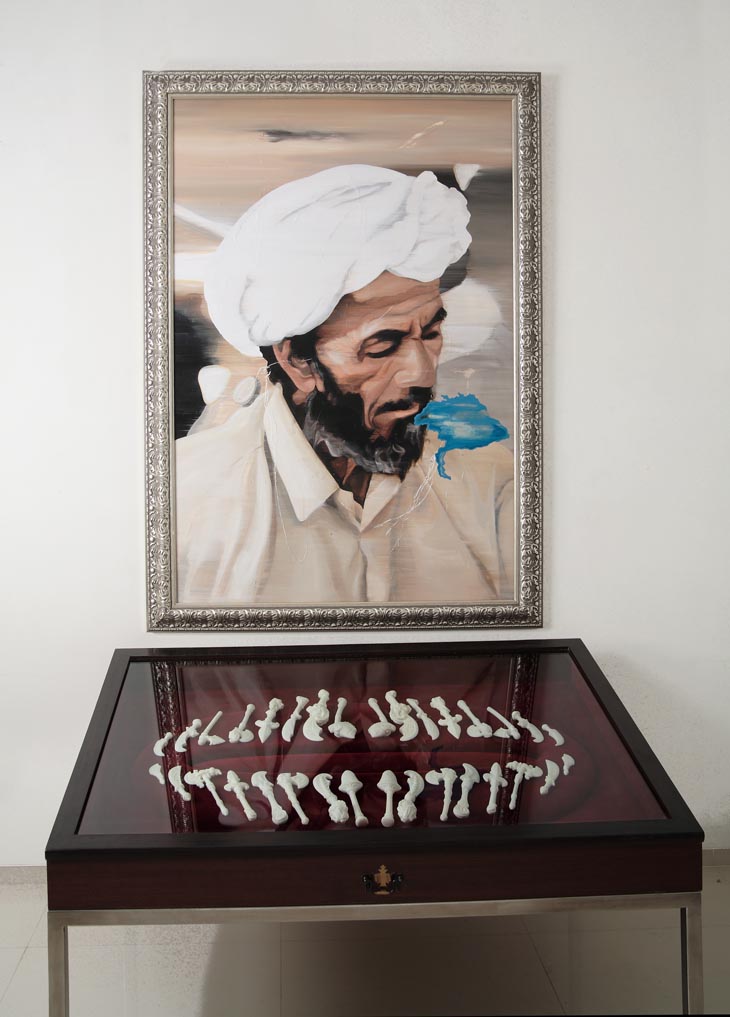
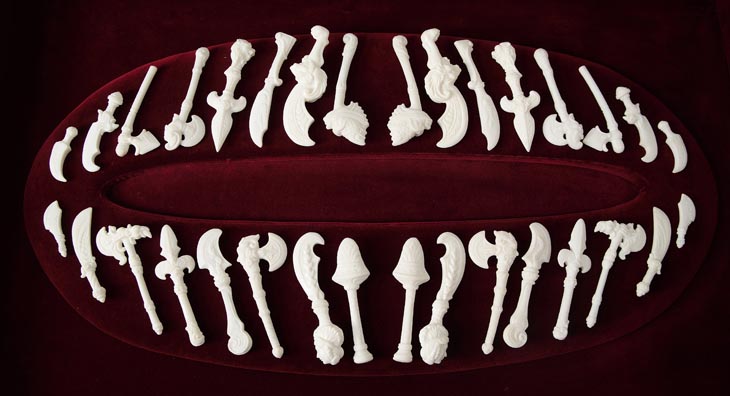
Reena Saini Kallat
The work stands like a screen, holding up a portrait formed by several hundred names of people, rendered in scripts of over 14 Indian languages. From a distance they come together as a portrait, but up-close they almost seem like a circuit-board of rubberstamps. The rubberstamps are made with names of those officially registered as having gone missing in India from different geographical zones. These include the names of those lost through natural calamities such as landslides, floods and earthquakes, the names of those who have gone missing during riots or large scale mishaps and the names of those abducted or absconding, with the police still trying to ascertain their whereabouts. These are people who seem to have slipped out of the radar of human communication, who have been thrown off the social safety net. The portrait of a sub-continental citizen is formed by numerous such names; the back of the portrait emerges as a sea of invisible identities, a bird’s eye view of a large human congregation.
Penumbra Passage (Canine Cases) comprises of a series of portraits of ordinary civilians from both India as well as Pakistan, their faces blemished by the silhouette of the disputed territory often referred to as Pakistan Occupied Kashmir. While the portraits are put in grand frames like those of royal descendants, the map of the land that remains at the core of the dispute between the two neighboring countries, casts a shadow on these portraits haunting us with tales from the region. The corresponding cases carry a range of weapons that appear more like museum relics, however on closer observation one finds that they are highly embellished with life affirming forms. Comprising a set of 32 pieces they collectively evoke human dentures, resonating with images of the conflict-ridden region.
Penumbra Passage (Canine Cases) comprises of a series of portraits of ordinary civilians from both India as well as Pakistan, their faces blemished by the silhouette of the disputed territory often referred to as Pakistan Occupied Kashmir. While the portraits are put in grand frames like those of royal descendants, the map of the land that remains at the core of the dispute between the two neighboring countries, casts a shadow on these portraits haunting us with tales from the region. The corresponding cases carry a range of weapons that appear more like museum relics, however on closer observation one finds that they are highly embellished with life affirming forms. Comprising a set of 32 pieces they collectively evoke human dentures, resonating with images of the conflict-ridden region.









